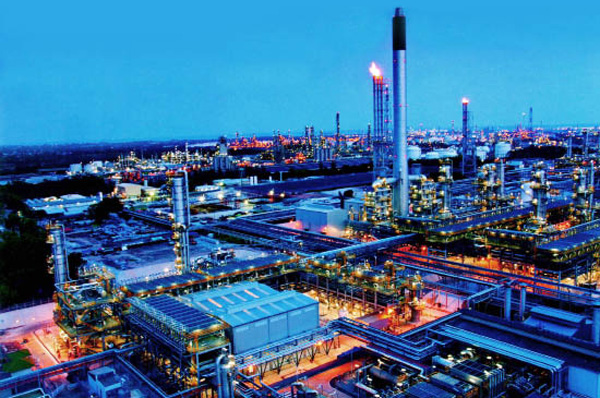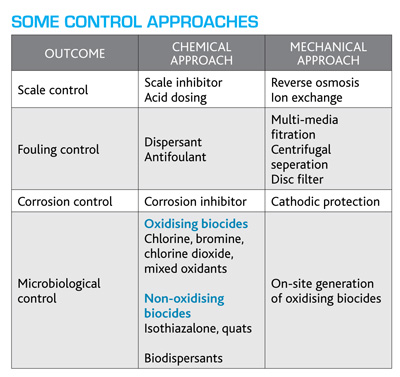Peter Tracey gives a broad outline of process cooling for industrial manufacturing operations and offers a few thumb rules to combat challenges encountered in its path.
Peter Tracey gives a broad outline of process cooling for industrial manufacturing operations and offers a few thumb rules to combat challenges encountered in its path.

One of the common uses of water in industry is that of process cooling. It is, however, not the only use, as water is obviously used for steam generation, which is used in many process industries, either as part of the process or for power generation. Most people are also familiar with cooling water in HVAC applications, which is strictly speaking a process. But process cooling in manufacturing industry presents a whole set of different challenges, a few of which will be discussed here.
If we define process cooling, in this case to be industrial process cooling water, it can be used either directly (as in the steel industry), or indirectly through heat exchangers (as in the industrial gas industry). Direct cooling is a subject on its own and is not discussed here.
Some relevant defenitions:
Scaling
This is the deposition of sparingly soluble salts on heat exchange surfaces, which lead to, at best, inefficiency and, at worst, loss of production. This can cost millions of dollars in process cooling.
Fouling
This is also deposition, but of suspended matter. In this region, we experience a lot of environmental dust, which is scrubbed from the air by the action of cooling towers. The effects of this are similar to scaling, and often the two phenomena are confused.
Corrosion
This is an electrochemical process that leads to metal loss. Once lost, metal cannot be replaced, and an entire asset can be lost due to corrosion. Corrosion products can also cause fouling.
Microbiological activity
Bacteria, algae and fungi are found in process water systems. These are naturally occuring phenomena, but their growth can be influenced by the conditions they encounter, such as elevated temperatures and contaminants. Their control is vital to an efficient process. The control of Legionella is also of importance to those who live and work in the immediate environment.
 It is important to realise that scaling/fouling (ie deposition), corrosion and microbiological activity are all inter-related and cannot be considered in isolation.
It is important to realise that scaling/fouling (ie deposition), corrosion and microbiological activity are all inter-related and cannot be considered in isolation.
Methods of process cooling
Once-through seawater cooling:
The sea is a source of “free” water, and once-through seawater cooling can be employed where the process is of sufficient size to justify the capital cost. As seawater is very corrosive, titanium or copper nickel heat exchange tubes are employed. One problem encountered is that of molluscs infesting the heat exchangers with resultant loss of its efficiency. To counteract this, seawater hypochlorite generators are used to kill the young molluscs, thus preventing infestation.
Sometimes, cooling towers are used either for conventional recirculating or for temperature reduction. This can lead to scaling of the cooling tower packing. In such an event, a scale inhibitor needs to be used.
It needs to be noted that there are restrictions on the quality of the seawater returned to the sea and temperature is of critical importance. Too high a return temperature will affect marine ecology, and, therefore, a statutory limit on temperature is usually applied.
Recirculating cooling water:
A more common kind of process cooling is where the process is on one side of a heat exchanger and cooling water on the other. These heat exchangers take various forms, such as shell and tube, double pipe, plate and frame. Some heat exchangers have water on the shell side.
These systems often utilise cooling towers to reject unwanted heat. They are often quite complex, with an array of heat exchangers being served by one central cooling tower system. They are usually “critical”, too, with efficiency being the central issue. Plant integrity is also a key issue, as loss of assets is unthinkable. Potable water is usually used in cooling towers. But we are seeing demands to use lower quality water, such as recycled water from elsewhere.
Care must be taken to avoid deposition and corrosion and microbiological activity must be controlled. Questions need to be asked, such as: Would filtration be beneficial and cost effective? If so, do we use sidestream or full stream?
Issues to be addressed
There are issues to be addressed by industries using water for process cooling
Use of lower quality water:
As constraints on the supply of potable water increase, there is a need to consider the use of lower quality sources of water. This water, as stated earlier, may come from elsewhere in a process stream, and may be considered polluted. However, modern membrane processes place this water within economic reach. We have already seen this in the District Cooling sector, where using TSE in cooling water system is now mandatory.
Zero liquid discharge (ZLD):
This is a process where no liquid is allowed to be discharged by a particular plant. It requires that only the solids are allowed to be removed from the plant by a licensed operator. Fortunately, we are blessed in this region with lots of sunshine. Evaporation ponds can, therefore, be used where space allows. In cooler climates plants have to use thermal evaporation to acheive ZLD.
Increasing environmental demands:
The use of chemicals as scale and corrosion inhibitors as well as biocides are typically being squeezed by tighter environmental legislation. Leading water treatment companies are, therefore, constantly upgrading their chemical products to meet new legislation.
Conclusion
The design of a water treatment regimen is a blend of the right mechanical equipment with an appropriate chemical regimen. As situations evolve, this approach should be under constant surveillance to ensure that it is still fit for use.
Copyright © 2006-2025 - CPI Industry. All rights reserved.